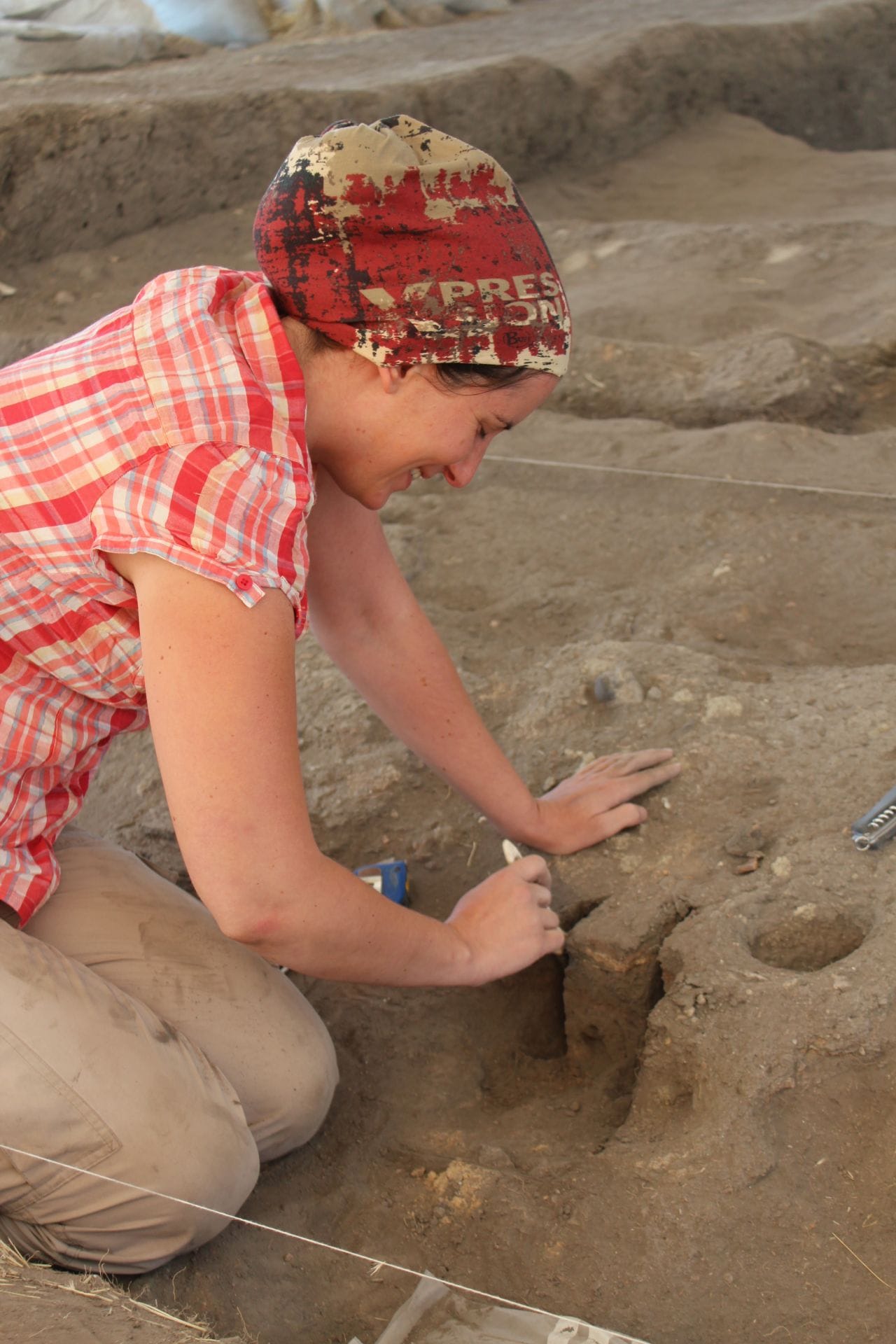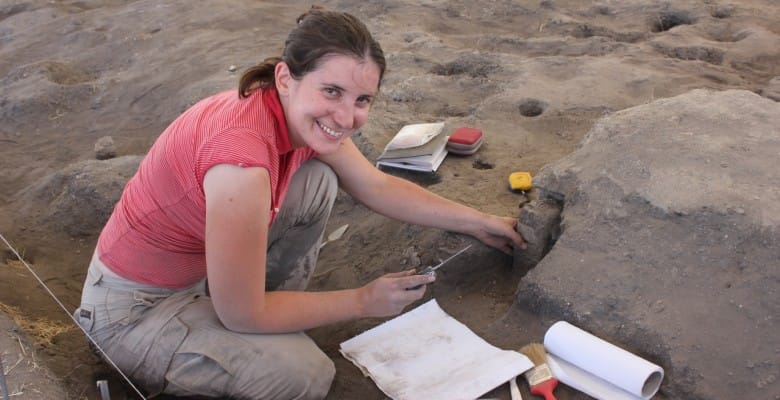Micromorphology is a scientific technique based on the study of sediments at the microscopic level. It gives us information on how the site was formed, the range of human activities that took place inside the buildings and throughout the site, and the state of preservation of the archaeological deposits.

The sample process involves first the detachment of a sediment block from the archaeological context to be investigated, followed by resin impregnation, cutting and grinding of the sample in the laboratory. When the preparation process is done we end up with a thin slide (30μm) that is examined under the microscope for evidence of cultural materials (obsidian flakes, pottery fragments), environmental remains (phytoliths, charcoal) and geological processes (layers deposition, erosion) that cannot be seen with the naked eye.
Micromorphological specialist, PhD student Aroa Garcia-Suarez from the University of Reading has been very diligently extracting samples this last week. Alongside her supervisor, Dr Wendy Matthews, she will be analysing these samples in the lab over the coming year.
“In the case of Boncuklu, micromorphological studies are being carried out alongside geochemical techniques such as spectrometry and laser ablation ICP-MS (to determine the chemistry of inorganic particles within the deposits) and GC-FID/GC-MS (for sourcing organic matter such as dung). We hope that this methodological approach will improve our understanding of the activities that took place within the households, the choices of construction materials, and the range of environmental resources used by this community.”




 Follow
Follow